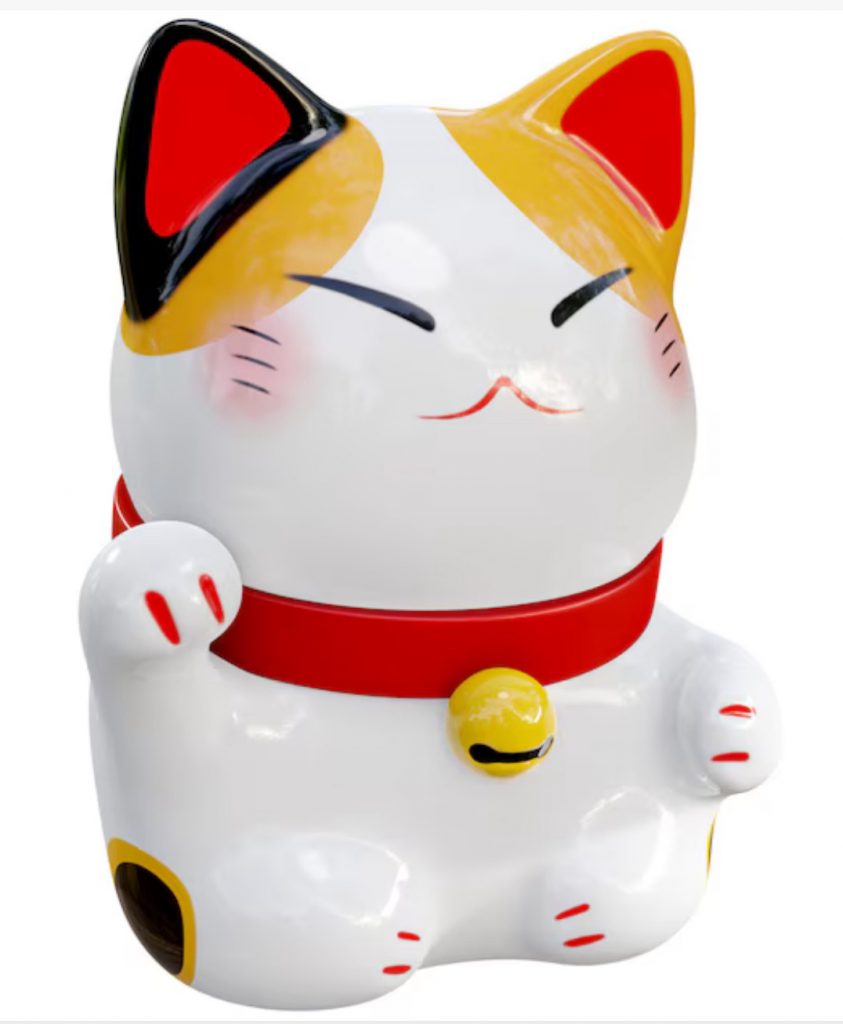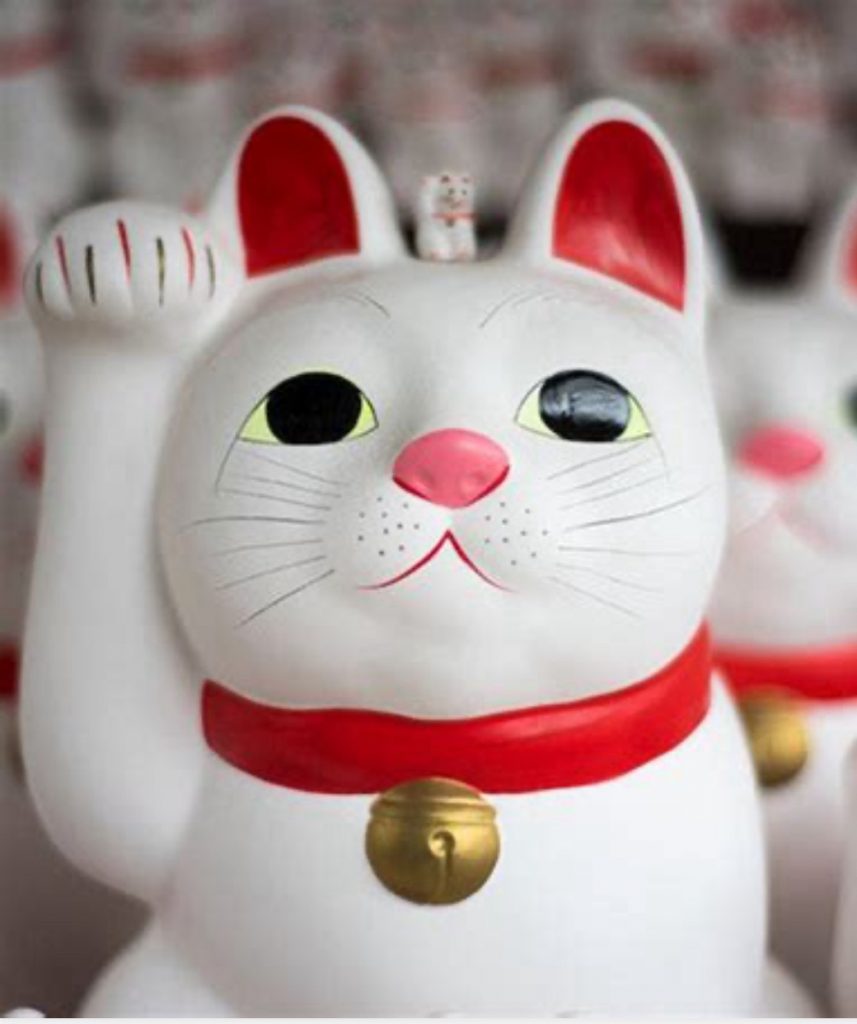
I wonder if like me you’ve always been intrigued by the cat figures that can be seen everywhere at the entrances to both Chinese and Japanese restaurants- you know the ones with the waving paw. They are just as popular in China as they are in Asian restaurants and shops across Britain. If you’re intrigued, but not at all sure what they mean, I hope you’ll enjoy this article where I try to to find out about the beckoning cat’s significance.
In the interests of being even-handed, I’d better declare that I have found both Chinese and Japanese origin stories for this iconic figure. In the article I’ll share both versions with you. All or none of the stories may be true, but whatever the origins there is no doubting the popularity of the figurines themselves. Usually made from ceramic or plastic, they show a cat in a beckoning gesture. Its paw moves back and forth in a swinging motion, and some even have motorised arms so that they can wave all day long. These statuettes are typically displayed at the entrances of businesses—such as restaurants, bars, and laundromats—in order to entice customers to come inside.
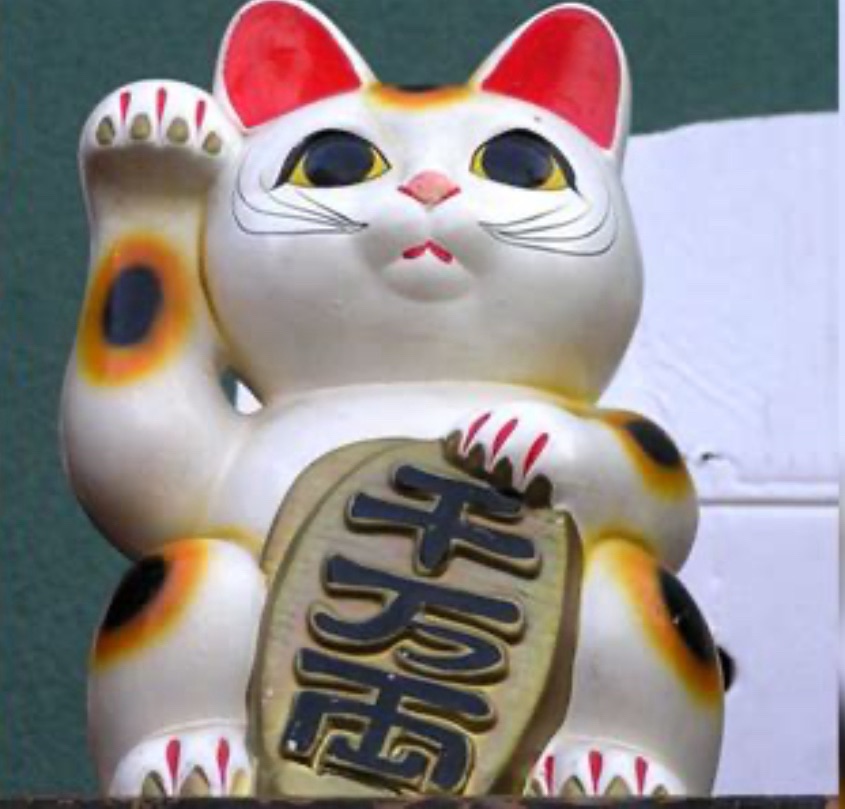
The first thing we have to understand is the arm movement itself. In western cultures the typical gesture for beckoning is with an extended arm and a hooked, moving finger, calling someone in. In Asian cultures signs of pointing people out are generally considered offensive. The reason for this might be that Asian cultures are in many features, collective, in contrast to the stronger individualism in western societies. A commonly understood way of beckoning someone in Asia avoids pointing at them directly and is done by extending the whole hand, palm down, and then beckoning by folding all of the fingers up and down.
So now we can understand the cat’s gesture and the swinging arm. We can add a little more detail to this. If you look carefully next time you see a beckoning cat, see if it is the left or the right arm that is moving. These cats are versatile. A swinging left arm is inviting customers into the establishment. However a bobbing right arm is sending a different signal – because this is a way of inviting in wealth and money. You may even have seen figures where the right arm is muscular and out of proportion with the cat’s body. Can you guess what that means – yes of course, it’s a way of attracting even more riches in through the door.
There are other symbolic features of this little creature. The classic colours of these lucky cats are white and gold. The white colour represents happiness while the gold is for prosperity. But if you’re looking for alternatives in life, you can alter the colour of your cat. A pink cat is usually thought of as helping you to find love. A green coloured cat brings protection to the whole family. And I am going to have to buy a blue coloured cat to post at the doorway to my school because the blue colour is associated with success in education.
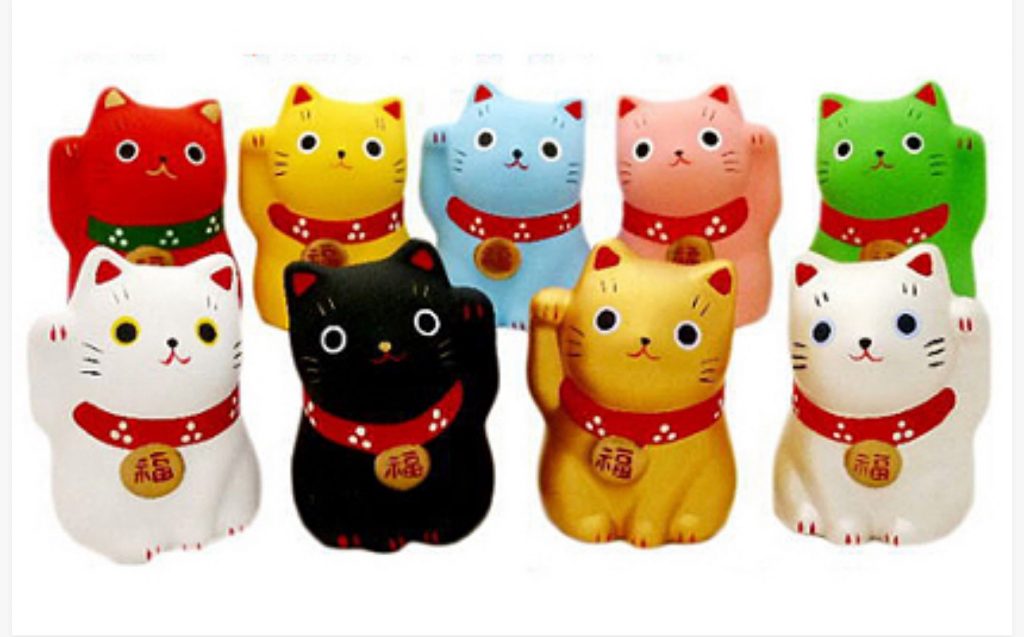
What are the back stories that help to explain why it should be a ‘lucky cat’ and not some other animal. Let’s start in China. In Chinese thinking, cats are not particularly associated with luck. For example, cats are not part of the Chinese zodiac of twelve animals. You probably know that the order of the zodiac animals was decided by a race across a river. Well, the story goes that on the day of the race the lazy cat trusted her brother rat to wake her up, which of course he failed to do, and went on to win the race himself.
Despite this, cats are common and positive symbols and what they symbolise is protection. This association can be traced back to ancient times. Grain, on which the people depended for nutrition, had to be collected and stored in large granaries. Naturally such granaries made perfect feeding grounds for hungry mice and rats, which of course made protective cats very popular animals to have around. In fact in the still largely rural province of Yunnan you can spot ‘cat tiles’ prowling along the rooftops where the owners have placed them to ward away evil spirits.
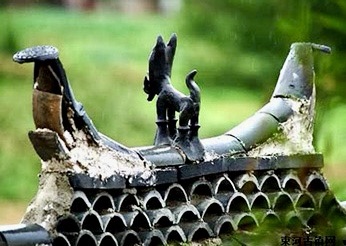
What of the little cat figurines we see in the shops? Is there a Chinese origin story for them? Well, yes! According to Chinese legends, the characteristic movement of the arms can be traced back to the T’ang dynasty which was the early medieval period in China, from 618 to 907 CE. Evidence linking the beckoning gesture to cats has been found in the form of a T’ang dynasty piece of literature. This text, which is full of information about ghosts, immortals and temples, has a chapter devoted to the symbolism of cats washing their faces. This is described as an auspicious act. One association with with cats raising their ‘arms’ and washing them up and down in front of their faces, is that it is a sign of coming rain. Now this certainly would have been a lucky sign to farmers waiting for rain to water their vital crops. But more importantly for our story, whenever a cat raised its ‘arm’ over its face, as our little cat figures do, it was a sign that important guests were coming to your house. I guess that it seemed the cats were cleaning themselves ready to greet the guests, in their role as protective guardians.
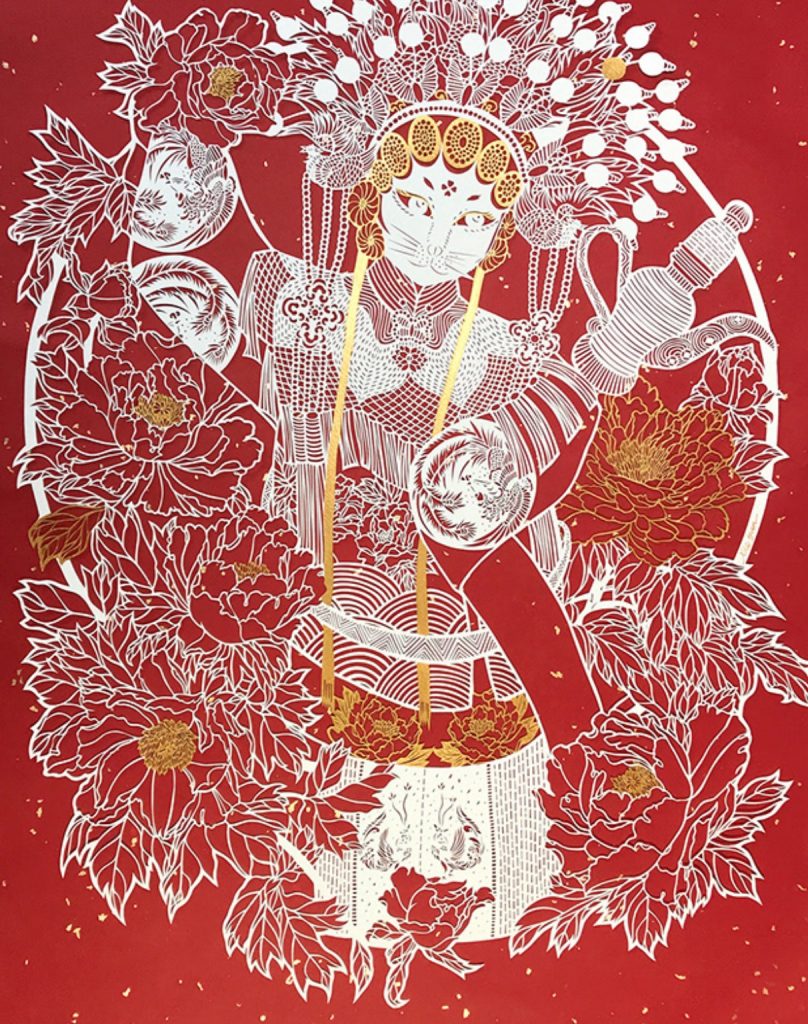
Now let’s turn to the Japanese version. In Japan these cat figures are known as ‘maneki-neko’, which translates literally as ‘beckoning cat’. The origin story for maneki-neko, goes back to the 17th century. The cat in question lived with a poor monk in Gōtoku-ji temple in Setagaya, Tokyo. One day a wealthy samurai called Ii Naotaka visited the area to hunt. The Lord got caught in a terrible storm and took shelter under a tree. While sheltering, the samurai saw the beckoning gestures of the cat, inviting him to take shelter in the temple. Just as the samurai stepped out from under the tree to go to the temple, a terrible thunder bolt caught the tree and it burst into flames. The beckoning cat had saved the lord’s life.
Naotaka was so grateful to the cat for saving his life, that he became the patron of the temple. He helped to repair it and make more space for the poor monk. When the cat died, a statue of maneki-neko was made to commemorate its life, and the location continues to be considered sacred today. We can see maneki-neko illustrated in Utagawa Hiroshige’s ukiyo-e woodblock print, Flourishing Business in Balladtown (Jôruri-machi hanka no zu), made in 1852. Historical evidence suggests that by the start of the twentieth century maneki-neko cats were popular all over Japan. At this time links between Japan and China were deepening with increasing numbers of young Chinese choosing to study in Japan And it’s not hard to see how these symbols of fortune might have travelled to China and across first of all Asia and then across the world.
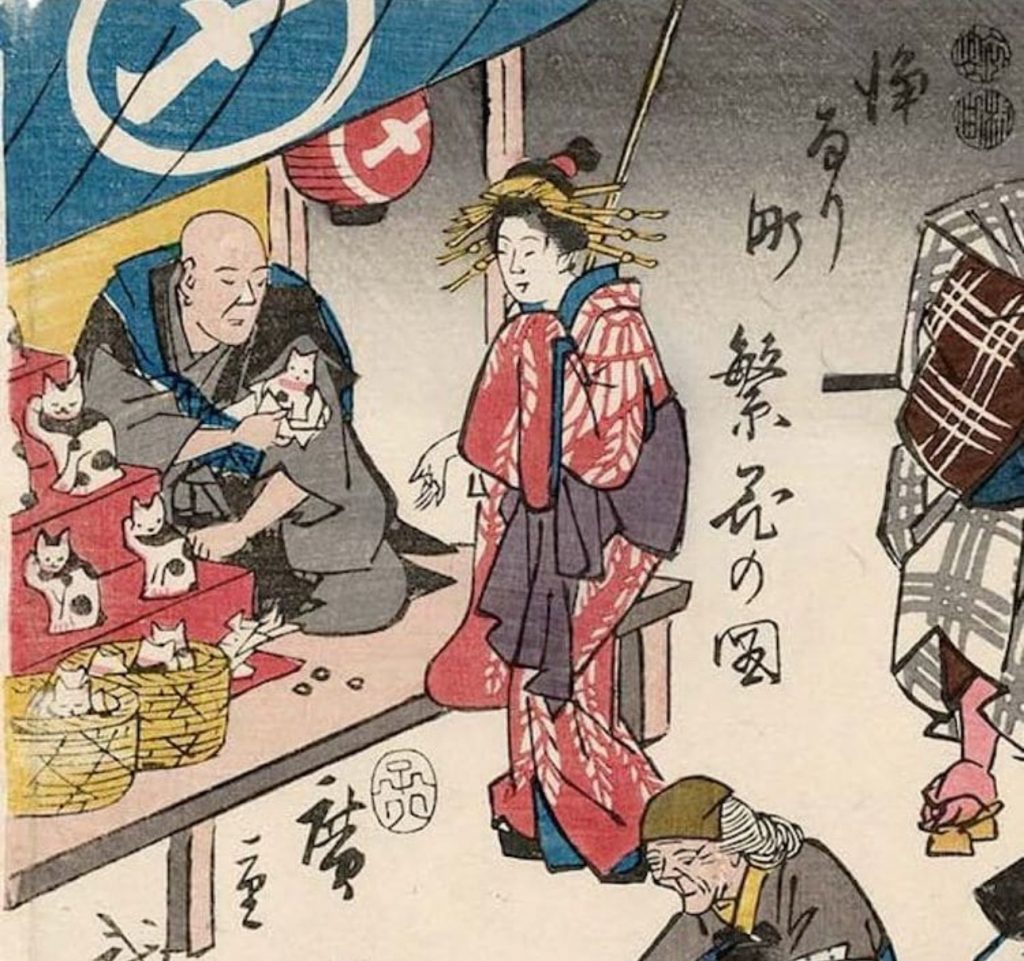
So there we have it – the story of the zhāocáimāo – the beckoning cat! Next time you step into your favourite Asian restaurant, following the cat’s beckoning arm, you will know the secrets of its welcoming charms.
